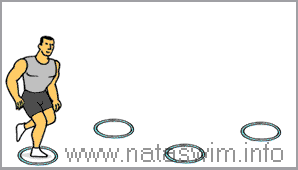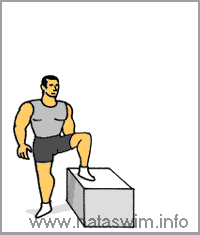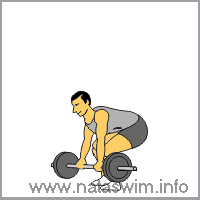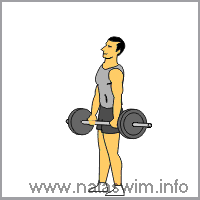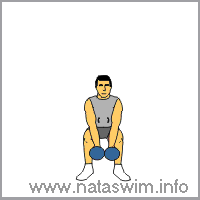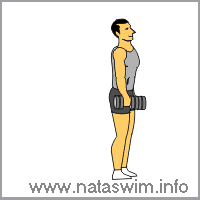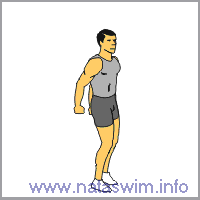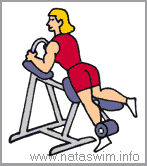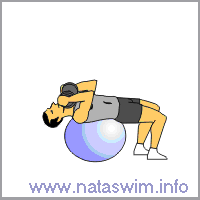Pro Level Functional training Macrocycle 1-A
Weeks 13-18 of Macrocycle 1 for Functional training. This is a double split(lower body/upper body), with Mondays and Thursdays for lower body, while Tuesdays and Fridays are for upper body. Wednesdays are for speed/agility training. Sundays are off. This is a Monday workout(lower body). Perform 5-10 minutes a of dynamic warm-up to start workout. Complete in straight sets with 60 seconds rest between sets.
Bounding with Rings
1. Jog into the start of the drill for forward momentum.
2. After a few feet, forcefully push off with the left foot and bring the right leg forward. At same time swing left arm forward and land into the first ring, which is 3-4 feet out and to the left with the right foot.
3. Continue and repeat with other leg and arm into the second ring, which is now 3-4 feet up and to the right.
4. This exercise is an exaggerated running motion focusing on foot push-off and air time.
Lateral High Hops
1. Stand to left side of box and place right foot on top of box.
2. Push off the box using the right leg only and explode vertically as high as possible. Drive the arms forward and up for maximum height.
3. Land with opposite foot onto box. Repeat with the other foot.
4. Repeat according to prescribed number of repetitions.
Power Clean to Split Jerk
Starting Position: Grab the barbell with your body is in a bentover stance with your back flat.
Explode up by pushing your feet through the floor keeping the bar close to your legs.
Keep your arms straight and forcefully extend your hips, knees, and ankles.
At the same time shrug your shoulders and at their highest point curl the bar up while forcing your hips forward and support the bar at chest level.
From this position press the barbell over your head and flex your hips and squat down into a split stance at the same time. Finish with the barbell in an overhead position.
Return to starting position and repeat.
Every second and/or third clean, do the spit jerk. Lifts to be performed at 60-75 of max, working on technique and form. After 4 weeks of traning, increase intensity to 80-90 of max.
Snatch
Keep torso straight but bent forward at the hips slightly.
Explosively raise the barbell by extending the hips, knee and ankle in a “jumping action”.
Keep your elbow pointed out and arm straight.
At maximum height slightly flex the hips then the knees.
Rotate elbows around and under the barbell. At maximum bar height, fully extend the elbows and lock the barbell overhead.
Catch the barbell by flexing at the knees and hips to absorb the weight and stand to a parallel stance.
Use 60-75 of max for first 4 weeks, after which the intensity should be increase to 80-90 of max.
Dumbbell Squat and Rotational Swings
1. Start position: Holding a dumbell in each hand start in squatted position with dumbells between legs.
2. Start movement by standing up and keeping arms straight rotate shoulders and trunk towards the left.
3. Return to the starting position and repeat to the other side.
4. Repeat for the prescribed number of repetitions.
Reverse Lunge
1) Start position: Stand with feet hip width apart.
2) Step backward 2-3 feet and lower body forming a 90° bend at the front hip and knee. DO NOT allow front knee to extend past the big toe - may cause injury.
3) Pushing off front foot, return to start position. Continue with same leg or alternate as prescribed.
4) Remember to keep head and back upright in a neutral position. Shoulders and hips should remain squared at all times.
5) Watch for proper knee alignment - do not let front knee extend past big toe or deviate laterally or medially. Back knee should not come in contact with floor.
6) To increase intensity, grasp DB’s in each hand (weight prescribed by trainer).
Back Extension on ball
1. Lie face down on a stability ball positioned under your hips and your feet on the floor.
2. Place a toning bar within your crossed arms and held against your chest.
3. With your upper body parallel to your hips hyperextend slowly and raise your shoulders up towards the ceiling.
4. You should only move a couple of inches and there is no need to forcefully hyperextend or extend past your bodies range of motion. You will only risk injury.
5. Return to the neutral or parallel position and repeat.
Ankle Bounces
1. Stand with feet shoulder-width apart and knees slightly bent. Arms should be at sides and bent up to 90°.
2. Hop continuously on both feet using only the ankles to project body up.
3. Remember to extend the ankles to their maximum range on each hop to ensure proper mechanics (or full plantar flexion).
For added resistance, use light (20-35 lb) dumbells.
Standing Hamstring Curl
1) Adjust knee pad so that top pad is 1-3 inches above the knee cap.
2) Start position: Step into machine so that bottom pad is behind the ankle and top pad in front of thigh. Grasp onto provided handles in front of body (if applicable). Trunk should be flexed forward at the hips to approximately 5°
3) Lift weight by flexing at the knee to 90° to 120°.
4) Return to start position.
5) Remember to keep the neck and back straight in a neutral position - hyperextension of the low back may cause injury.
Reverse Curl
1. Start position: Lie with back on floor or bench with hips flexed at 90° and feet in air holding onto a medicine ball. Position arms at sides with palms down on floor.
2. Leading with the heels towards the ceiling, raise glutes (butt) off floor or bench.
3. Return to start position.
4. Remember keep legs from swinging to prevent momentum throughout the exercise.
Weighted Stability Ball Crunch
1. Sit in upright position on flexaball with feet flat on floor.
2. Walk feet forward allowing flexaball to roll underneath body until it is positioned on lower to mid-back region. Raise hips slightly to create a “table top” position parallel to floor.
3. Place hands on chest holding a dumbell. Head should be in a neutral position with a space between chin and chest.
4. Leading with the chin and chest towards the ceiling, contract the abdominal and raise shoulders up.
5. Return to start position.
6. Remember to keep head and back in a neutral position. Hyperextension or flexion of either may cause injury.

